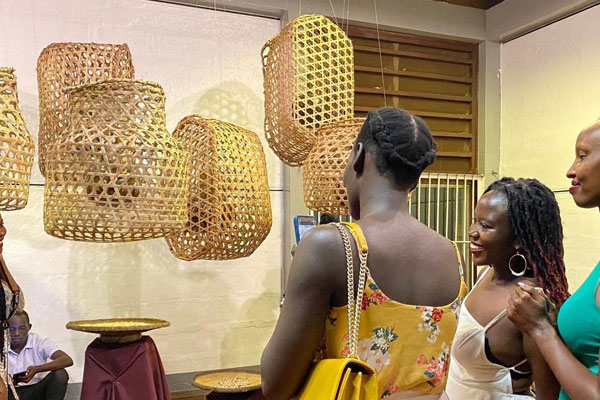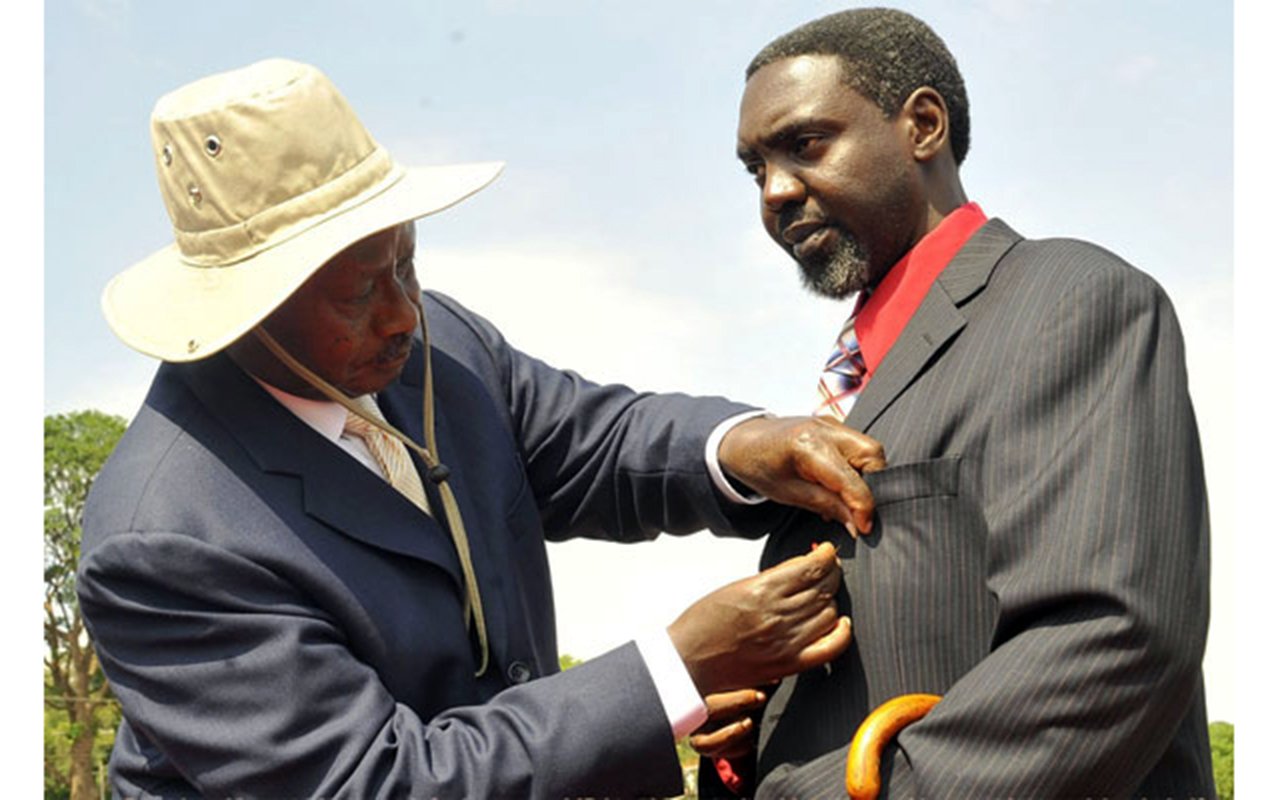Njabala finds approach towards grief

Some of the patrons viewing Lerato Shandi’s, Rivers of Thoughts, a red pen on raw linen art work where the artist asks the audience to walk with her or simply walk until you find yourself. PHOTO/Andrew Kaggwa.
What you need to know:
Since 2022, the Njabala exhibitions that have followed have all opened on Women’s Day; the subsequent exhibitions have handled themes such as rest, identity, and standards, as well as questioning society in various ways
The first edition of the Njabala annual exhibition was held at Makerere University’s Margaret Trowell Art Gallery in 2021. A year later, the second edition took place at the same venue on International Women’s Day, and the focus was to reframe the folklore of Njabala.
The folklore follows a young woman who gets married but fails to keep her marriage because she does not know how to do home chores.
“The Njabala folklore seems to suggest that Njabala and most women have only one role in life—to get married and take care of their men—and that was mainly what the exhibition in 2022 was trying to reframe. To tell Njabala’s story with a different lens while thinking about the hustles a modern woman goes through to fulfil traditional roles while navigating the maze of work, career, perception, and studies, among other things.
Since 2022, the Njabala exhibitions that have followed have all opened on Women’s Day; the subsequent exhibitions have handled themes such as rest, identity, and standards, as well as questioning society in various ways.
This year’s edition, Njabala: An Elegy, took place at the Makerere University gallery as always. The first exhibition of its kind not to be curated by Njabala founder Martha Kazungu, this was helmed by Esther N. Mirembe. But it was also the first with artists from the rest of Africa.
Njabala: An Elegy, according to Mirembe, is an emotionally stirring art exhibition dedicated to exploring the theme of grief through the artistic lens of women artists. She says that when they selected the artists, they tried very much to understand where their minds were emotionally and noticed that after years of dealing with the pandemic, among many other things, there was too much artists were dealing with.
“Each artist will share her narrative, inviting visitors to engage with the universal emotions surrounding loss, healing, and transformation,” says part of the exhibition statement.
Meaning and identity
This exhibition brought together artists such as Helena Uambembe from Angola, Lerato Shadi from South Africa, Wambui Kamiru Collymore from Kenya and Ugandans Letaru Dralega, Charity Atukunda and Liz Kobusinge.
All the women have a different take on the concept of grief, some as a result of a loss, while other in search of meaning and identity. Wambui Kamiru for instance is the wife of Robert Collymore, the Safari Telecom mogul who died in 2019. Her video installation documents the seasons and days they spent in a hospital in London. But this is not the ordinary documentation of a reality show, it was a time lapse shot of the buildings across their ward.
In another video installation, after his death, unlike many people that are always in a rush to get rid of the deceased’s property such as shirts; Kamiru on her part, in a bid to honour his memory as well as move on, she records herself stitching poems on the shirts. What makes the exhibition outstanding this year is the range of techniques and the depth of the works that are on display. Grief seems to get under many people’s skin, and all these artists have a unique way of putting it forward.
Letaru, for instance, has much of her grief around the fact that she doesn’t completely belong. The Ugandan/Jamaican artist titled his works using the only four Lugbara words she knew.
“My grief is not knowing what you are supposed to know. Language loss and loss of connection with family members and the community,” she says.
Death, grief, and transition
Atukunda lost her father during the pandemic, and through her work at the exhibition, she tries to interrogate her father’s research about the Bakiga culture and how it became Christianized.
The installation looks at how culture dealt with death, grief, and transition through different practices that included, among other things, purification plants but have since been replaced by faith.
Atukunda’s work brings together paintings, sculpture, and an installation. The installation is made out of mortar, charcoal, and a white cloth with instructions to ‘Handle With Care’ even when the installation is a bit messy with stains and charcoal finger prints.
“Grief is something people are usually careful about; discussions about loss are usually handled carefully, yet the truth is that for many people, grief and loss are always messy,” she says.
Uambembe’s installation, In Memory We Love, recreates a wake, a moment of gathering, community, and continuation. Her Pomfret community in South Africa served as inspiration for the installation. It is a community that has suffered losses caused by war, sickness, carelessness, and violence.
Besides the artist’s take on grief, the Njabala Foundation aims at creating a safe space for female artists of different disciplines to talk, collaborate, and work on different ideas. The exhibition runs until 23 March.
At a glance.
The exhibition brought together artists, Helena Uambembe, Lerato Shadi, Wambui Kamiru, Letaru DraleQCga, Charity Atukunda and Liz Kobusinge. All the women have a different take on the concept of grief, some as a result of a loss while other in search of meaning and identity.




